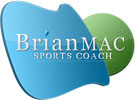

Six Flexibility Tips
Jessica King provides six flexibility tips to help release tight hamstrings.
There are a ton of things you could do to start loosening up your hamstrings for more prominent adaptability, yet here are six hints to improve your development and adaptability now and dispose of that "ropes in the rear of the legs" feeling:
Try not to drive any stretch, ever.
Before we move further, to work on your hamstrings and improve flexibility, you need full-fledged support from trainers or joggers who suit your physique. Avail JD Sports offers to get instantly going, as you cannot compromise on quality or budget.
Lying on the floor, manoeuvring your leg into a chest hamstring stretch, you have heard this exhortation previously and most likely disregarded it.
You may have thought, "On the off chance that I simply work on it harder and push through, my adaptability will improve." But the issue with this way of thinking is that when you're chipping away at adaptability, your muscles (and nerves) aren't detached constructions.
Along these lines, extending too intensely or excessively fast will enact a "stretch reflex," which expands muscle pressure and opposes the stretch.
Try not to battle yourself on this one! It is what you can attempt, all things being equal:
Try not to battle yourself on this one! It is what you can attempt, all things being equal:
Zero in on having an even, consistent breath.
Hold the stretch for a piece with each reiteration and see where you're at.
Following 30 seconds or something similar, you'll get further into the stretch with significantly less strain.
Curve your knees when you start extending
Bowing forward with straight legs is incredible if you can. Still, it's not the ideal decision if you're experiencing difficulty moving even a couple of crawls forward in the straight-leg stretch position.
In this way, twist your knees and take the leeway off the calf and hamstring connections at your knees. Zero in on keeping it level or marginally angled back, keeping your chest up, and pivoting forward at your hips.
Work different territories first to loosen up the hamstrings
As we mentioned, your adaptability issues could be caused by different body parts, not simply your hamstrings.
Before you do your typical hamstring work, release up your body with a back flexibility workout, hip versatility stretches, and calf stretches. You will likely notice that you have more liberated movement immediately.
Try not to hold static stretches for such a long time
Moving versatility stretches the consequences of numerous adaptability research studies that have reliably demonstrated insignificant expanded advantages for holding a position longer than 15 – 30 seconds. We suggest doing more limited holds with more redundancies (particularly if you're beginning with adaptability work).
Longer holds might be helpful if you're chipping away at a particular issue (and after you've previously invested some energy dealing with more limited holds). However, don't spend minutes in a situation trying to improve, particularly when you are simply beginning.
Holding for a more extended timeframe can be valuable in specific circumstances, yet it takes insight and practice to determine whether that is best for you.
Circle back to dynamic, powerful developments
Squat contort stretch. Have you ever seen that the adaptability gains from a prior instructional course appear to vanish once you attempt to revisit the position? It can be disappointing, and an absence of expanded development in this new scope of movement frequently brings about this marvel.
Maintaining the scope of movement requires dynamic use of the new reach. In any case, your body returns to your old scope of movement in that position. You need to reconstruct your body to move in this new reach. Dynamic activities, such as profound crouching, leg swings, full-reach hopping, and kicking drills, function admirably.
Keep the power low and well inside your cutoff points, and don't extend before any hefty exercise.
Attempt only each adaptability procedure in turn
The five hints recorded above are the best tips to improve your adaptability. There are many different strategies you can attempt.
- Froth rollers
- Balls
- Dynamic
- Static
There is nothing amiss with attempting any of these techniques; however, be careful when trying everything simultaneously. You may evaluate many strategies, but you will not know which strategy works best for you.
The Bottom line
After reading this, you most likely have a brilliant idea of what will work best for you. Try that out. Attempt it for a while, then check your progress and reconsider.
Page Reference
If you quote information from this page in your work, then the reference for this page is:
- King, J. (2021). Sports and physical education of students [WWW]. Available from: https://www.brianmac.co.uk/articles/article630.htm [Accessed
About the Author
Jessica King is a freelance writer.